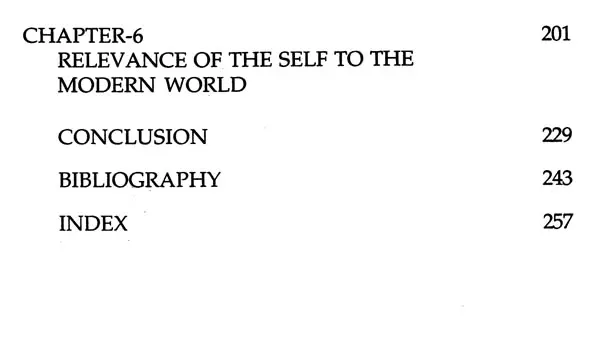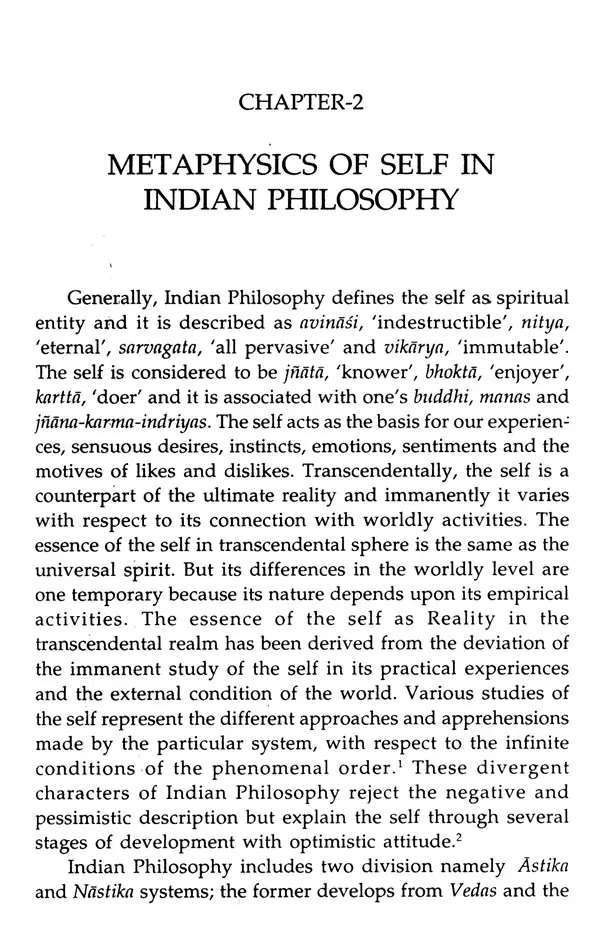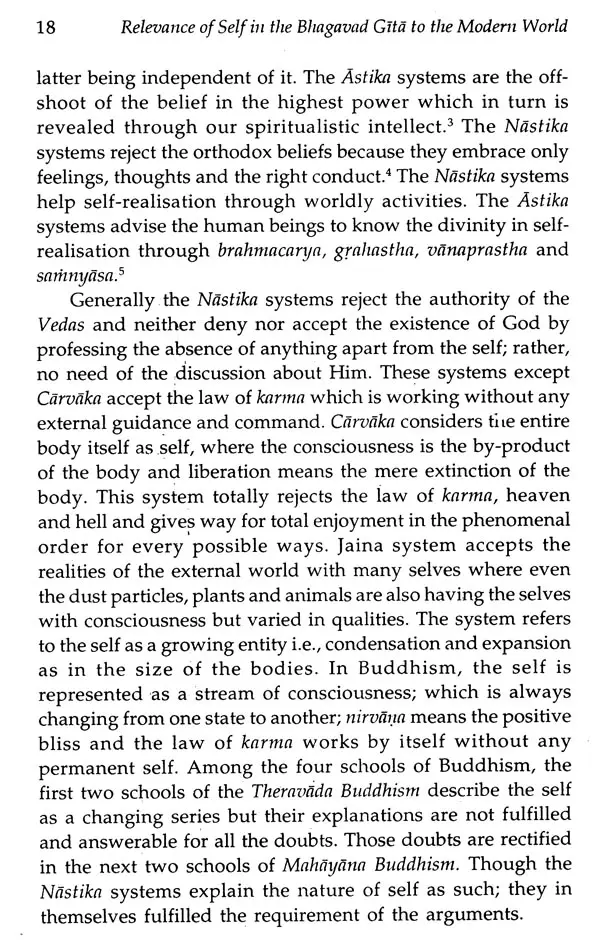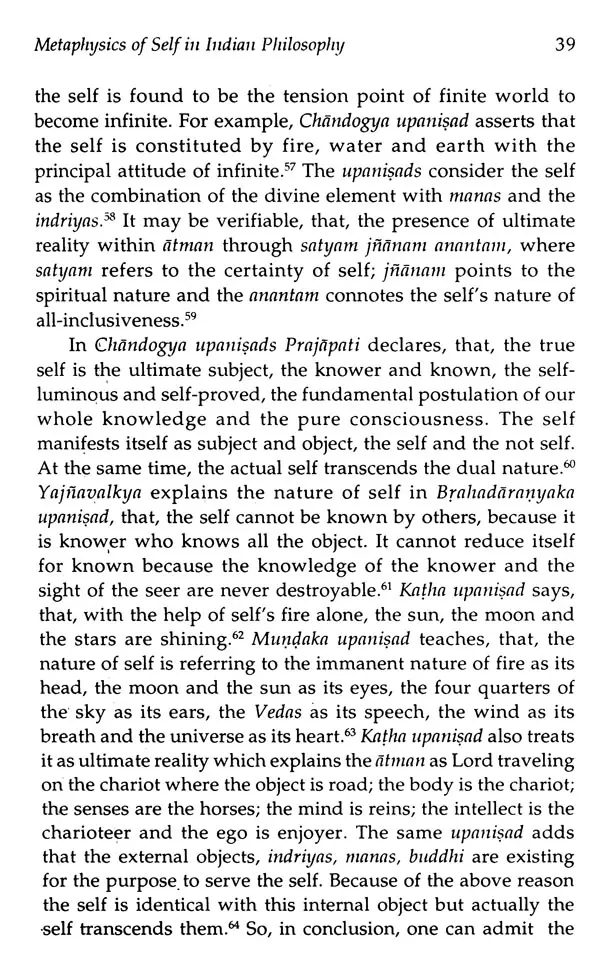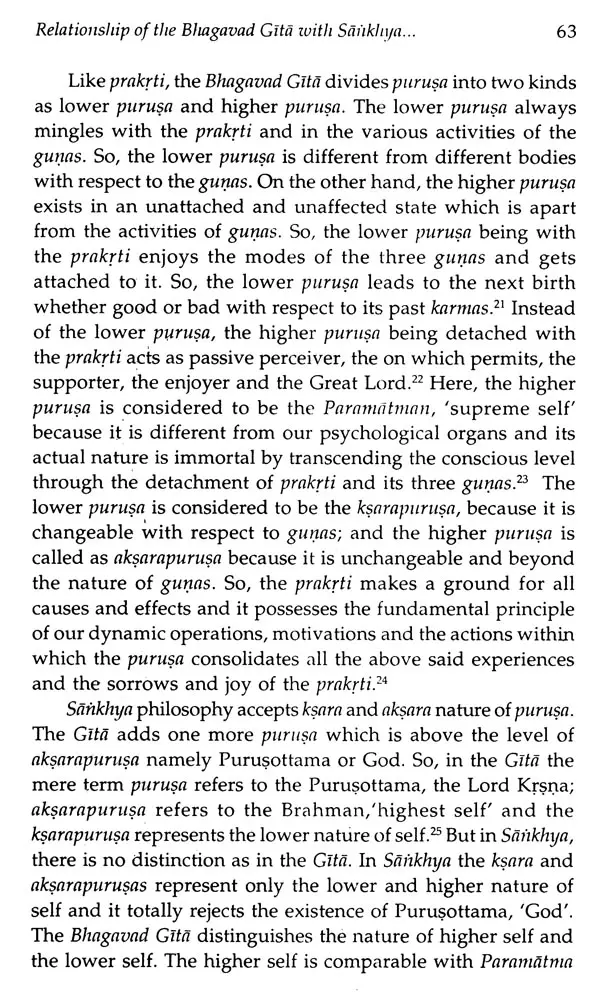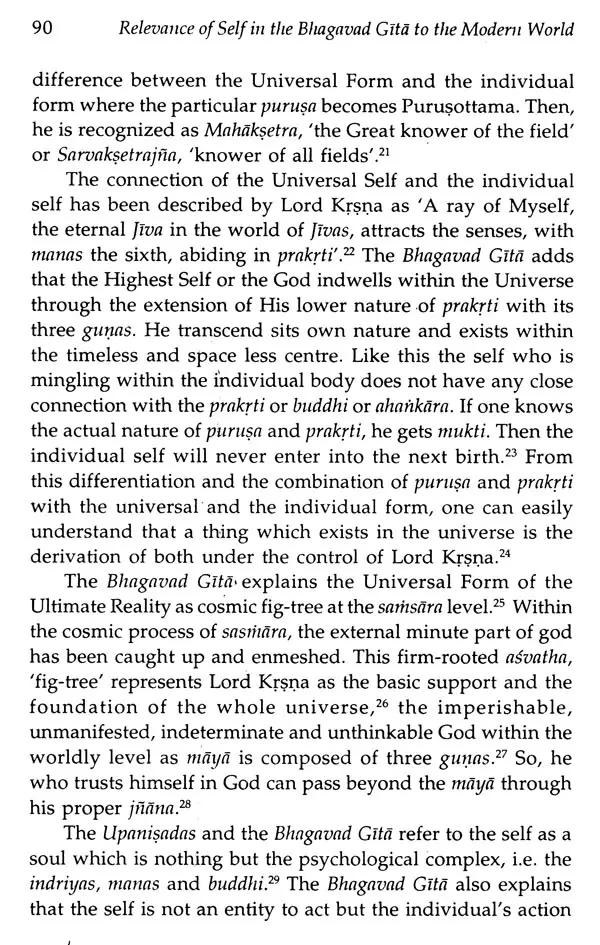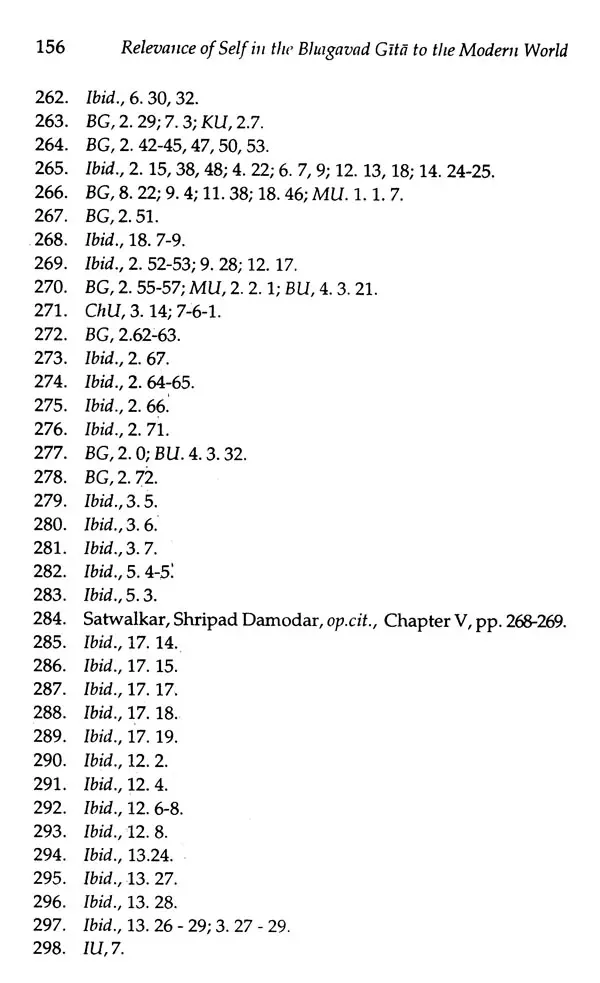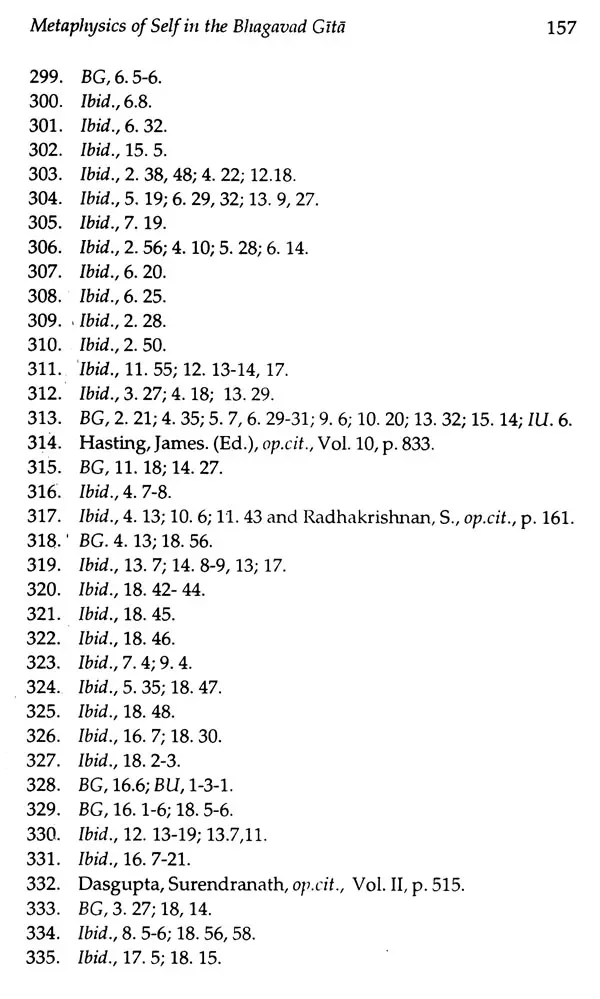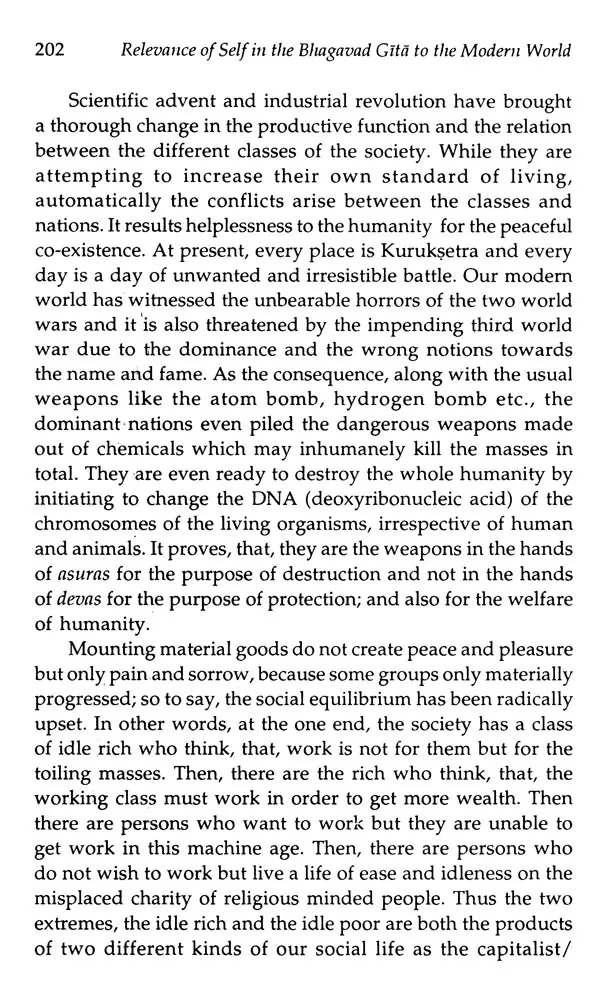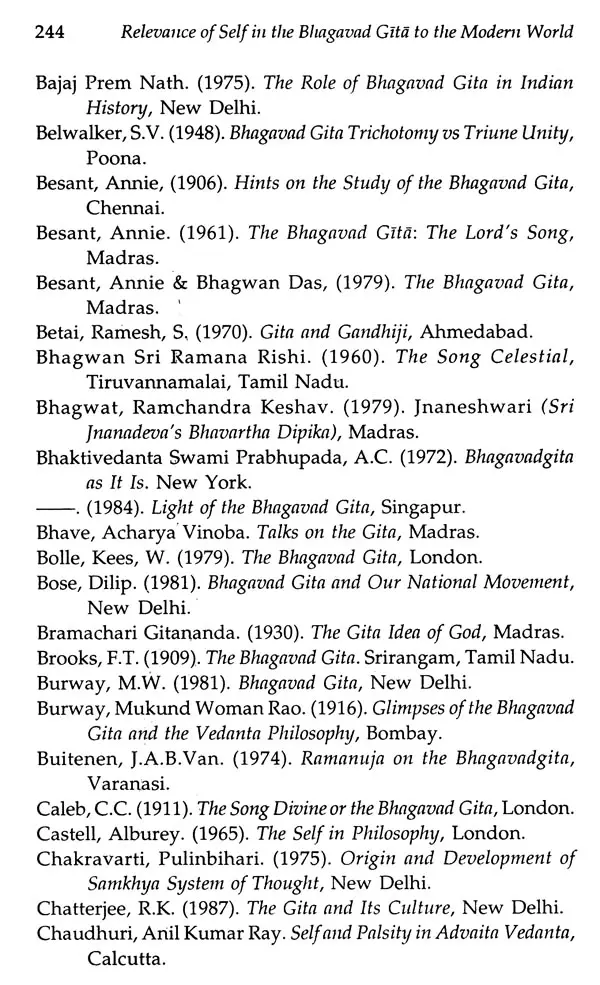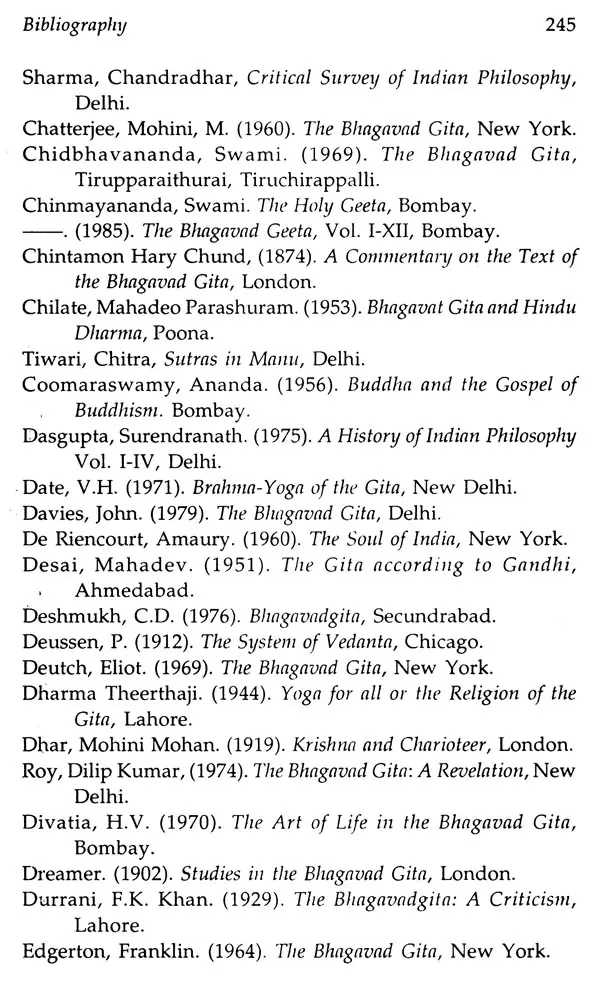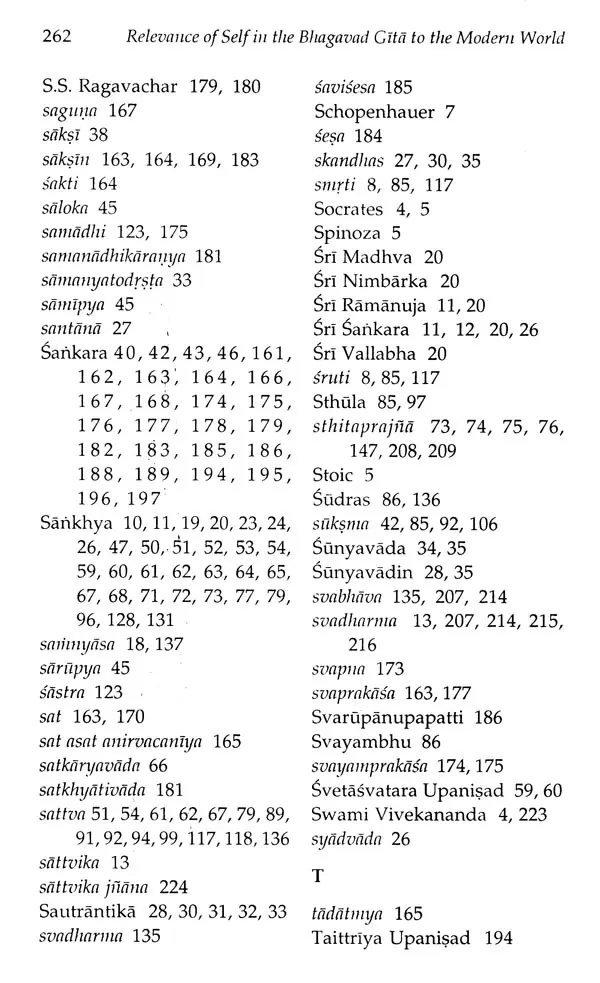About the Book The monograph reasonably elucidates the svabhava of self within the societal context of svadharma, i.e., performance of prescribed duties based on the gudas through niskamyakarma yoga. It authoritatively exerts the scientific treatments of the self in Bhagavad Gita with the background of absolutism, theistic absolutism and realism of astika as well as nastika systems; and highlights its uniqueness by comparing with Sankhya, Yoga, Jainism and Buddhism. It comprehensively analysis the Commentaries of Sri Sankara and Sri Ramanuja: and, because of its modernity and practical applicability, advocates the latter's thematic principles.
This philosophical piece with necessary arguments emphasizes, that, the sthitaprajna, by performing his ordained duties with the right perspectives of varnasramadharma along with the sense of material detachment and sattvika jnana: and following the middle path with self- determinism, he through the spiritual order could attain the final emancipation, i.e., mukti. The book authentically foresees the evolution of World Religion; within which all sciences, all religions and all philosophical speculations confirm the selfless service for the welfare of world humanity; and through it, not only the individual selves but also the animate and inanimate beings merge with Universal Self, which in turn, unveils the secret, i.e., the ever dynamic Spiritual Energy engulfs the conscious and non-conscious entities of the cosmos.
About the Author J. Rangaswami (b. 1956); Solaiudaiyanpatty [Thirumalaipatty]; Namakkal Dt., Tamilnadu), Professor, School of Philosophy, Tamil University is rank holder of M.A. (1980), M. Phil. (1981), Ph.D. (1983) at Annamalai University. The author of 7 books has untiringly completed 10 Research Projects; and published 50 articles. He is acclaimed as use Visiting Research Associate (1994- 96), Department of Philosophy and Religion, Banaras Hindu University, Varanasi; Associate (1996-98), Indian Institute of Advanced Study, Shimla; and Commonwealth Fellow (2004-05), Department of Religious Studies, Lancaster University, United Kingdom. He recently released a monumental work on Srivacanabhusanam of Pillai Lokacarya, one of the canonical texts of Srivaisnavism which is commented by the international scholars. Currently he is working on Acarya Hrdaya of Alahiya Manavalap Perumal Nayanar, the other source of Srivaisnava fold; and personally shouldering a project on Sankhya Darsana. His scholarship on Post-Ramanuja Srrvaisnavism, specifically upon the polemic texts and manipravala commentaries of Nalayira Divyaprabandham is laudable.
Foreword It is a world known fact that the greatness of Bhagavad Gita is beyond the words of appreciation. It crosses the national boundaries and guides humanity for its moral and spiritual upheaval. From it, the plausible answers for metaphysical along with the multifarious socio-political and economical, including the scientific problems, could be deduced for the summum boudoir the life per se. Minding this cosmopolitan perspectives of religious and philosophical outlook, Aldus Huxley commends, "The Gita is one of the clearest and most comprehensive summaries of the Perennial Philosophy ever to have been made" (Mukerjee1999: xxi). Apart from them, it maintains the secularist trends and provides available means for societal welfare. Dr. S. Radhakrishnan affirms this: "The chief problem facing us today is the reconciliation of mankind.
The Gita is specially suited and purpose, as it attempts to reconcile varied and apparently antithetical forms of the religious consciousness and emphasizes the root conceptions. which are neither ancient nor modern but eternal? and belong to the very flesh of humanity, past, present, and future" (Radhakrishnan 1977:6-7).
Though the esoteric text is analyzed through multifarious dimensions by the international scholars, the approach of the present publication is specific; in which, the author focuses upon the nature of self within the worldly flux and its contemporary relevance. The Celestial Song states, "Let a man lift himself by himself; let him not degrade himself; for the self alone is the friend of self and self alone is the enemy of the self" (7:5). He excavates the uniqueness of the text within the background of the Indian Philosophical systems and exhaustively elucidates the thematic conceptions of the self and clarifies the practical means to overcome the hurdles
Introduction The truth is unanimously accepted, that, all the religions depend upon their scriptural support to anchor their faith for ever. As, it is understood, Christianity, Islam and Hinduism are supported by Bible, Quran and Prasthanatrayam respectively.' Among the Prasthanatrayam, Upanisads are considered· to be the essence of the Vedas. They are all in toughest and archaic language and enriched with the diversified, enigmatic and paradoxical truths. Since they demand for an extraordinary intellectual caliber and comprehensive understanding, indeed the ordinary intellectuals may not have the chance to realize their truths. Though Brahma Sutras also absorbs the salient features from the Upanisads and forms a general dialectical and substantial basement, they hold the different doctrines by inter- connecting the numerous theological as well as the philosophical views. But one cannot understand the stotras and Upanisads directly except with the help of the textual commentaries. Even though Upanisads and Brahma Sutras are considered to be the wonderful treasure troves of philosophical doctrines, they are not so popular as expected among the intellectual masses because a very few only take pains to grasp the truths. Comparatively since the Bhagavata gita condenses all the rationalistic essence of Vedanta and covers the philosophical wisdom of the Brahmna Sutras', and expresses the truths directly with reference to the societal needs and current socio-economical and religious problem of the individual as well as it always stands as the beacon light to the ships of the sea.
5. Radhakrishnan holds the view, that, the Bhagavad Gita penetrates and forms a harmonious reconciliation within the diversified truths proclaimed by Vedas and the Upanisads? So, even though the philosophical truths of Vedic religion disintegrate from the intellectual as well as the ordinary masses, the science of the Bhagavad Gita certainly could maintain the principles and place them before the society' for its onward march towards the humanistic order. The Gundharmam expresses this, fact, 'All the Upanisads are the cows, the milker is Krsna, the cowherd boy, Partha is the calf, men of purified intellect are the drinkers, and the milk is the supreme nectar of the Gita.
The Bhagavad Gita contains seven hundred verses. They have been divided into eighteen chapters, which are included between the twenty-fifth and forty-second chapters of the Mahabharata. The treat Dent of the text may be brought under three major divisions: (I) !he first six chapters are karma khanda which deals with the rituals. (ii) The second six chapters are bhakti khanda which explains the meaning about the devotion.
(iii) The last six chapters are fine khanda which describes the meaning and the way to acquire the full fledged wisdom and the values and the necessity of self-surrender."
Book's Contents and Sample Pages


